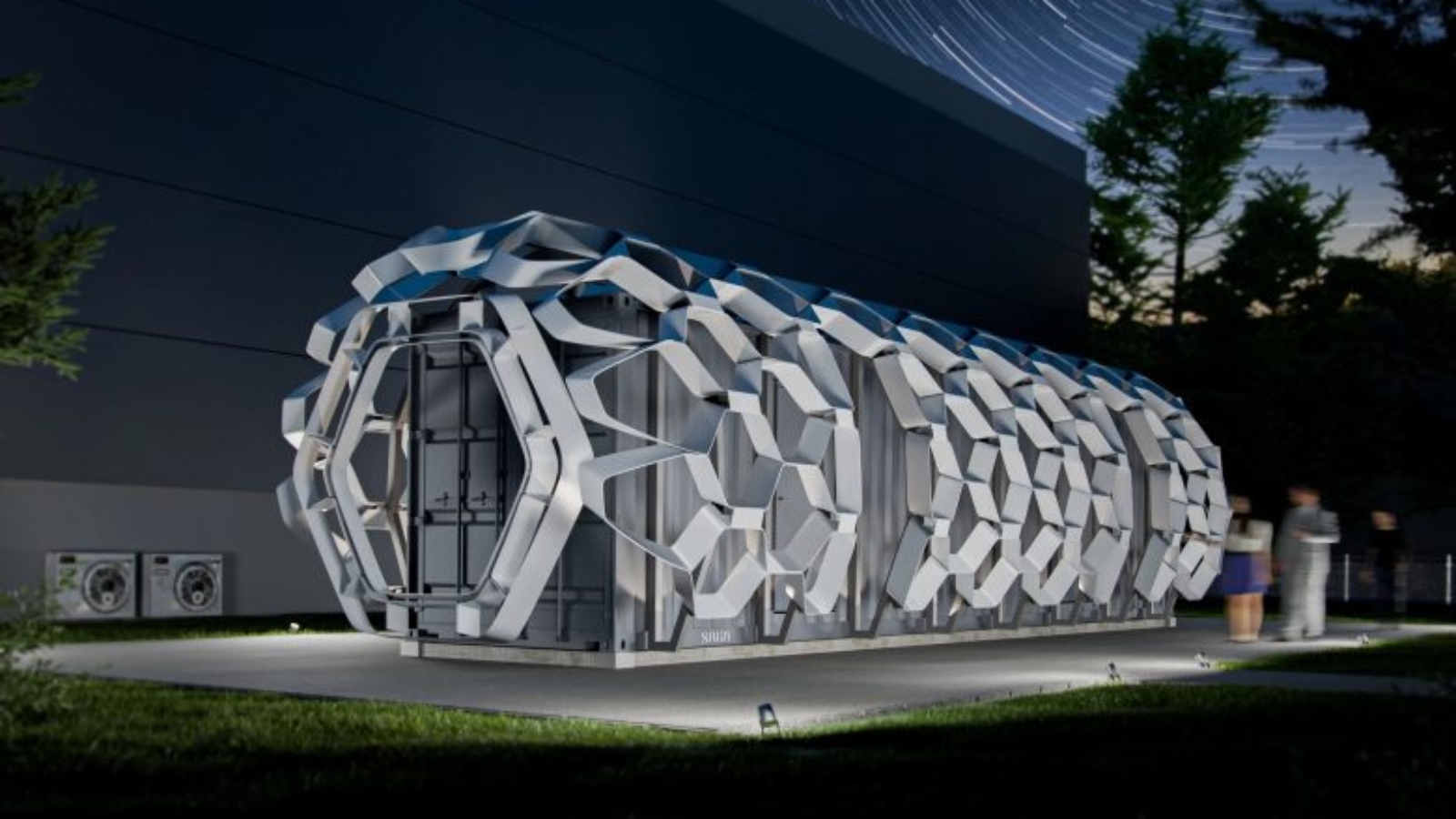The FLEXHab space habitat, developed to train astronauts for upcoming Artemis missions at the European Space Agency (ESA), showcases an advanced use of 3D printing technology, courtesy of “superhack” Danish company WOHN. Project partners also include Prusa Research. Various state-of-the-art technologies were used to enhance crew comfort and functionality, including multiple 3D printed interior elements crafted from upcycled wood fibers and polymers.
FLEXHab’s interior exemplifies modern, sustainable design, integrating numerous 3D printed elements that contribute to both form and function. Key components such as cabinet fronts, ceiling panels, and other structural features are created through 3D printing using a composite polymer made of polypropylene (PP) and 40% wood fibers supplied by Woodcomposite Sweden AB. Produced by the Danish firm WOHN, these 3D printed elements utilize upcycled materials, demonstrating a commitment to environmental responsibility and innovative material use.

A unique feature of the 3D printed ceiling panels is their accommodation of hidden circadian lighting. This lighting system, embedded within the ceiling structure, adjusts to simulate natural light cycles, promoting the well-being of astronauts by regulating sleep and circadian rhythms. The carefully designed, printed polymer components seamlessly integrate these lighting features, ensuring a visually appealing and functional habitat environment.
Modular and sustainable 3D printing
FLEXHab is based on a modified 40ft high-cube container, forming a modular structure that allows for flexible usage and straightforward transportability. The exterior is enveloped in a 3D-printed glass fiber-reinforced polymer facade that mimics the silhouette of a lunar habitat. This durable facade, also produced by WOHN, is coated for enhanced weather resistance, making it a strong, lightweight, and long-lasting feature.
Manufacturing on Demand

The 3D printed bulkheads and interior partitions optimize spatial arrangements, creating a balanced layout within the habitat’s compact dimensions. By using 3D printed materials for key structural components, FLEXHab allows for rapid repairs or replacements when necessary, adapting seamlessly to the needs of evolving space missions.
Inside FLEXHab, the integration of 3D printed elements allows for versatile, multifunctional spaces suited to the varied requirements of long-duration missions. The galley area, designed as a primary recreational and dining space, includes Alcantara Vegan Suede seating and stowable dining tables that can be neatly folded away to convert the area into a workout space equipped with stored exercise equipment.
Advanced and adaptive habitat experience
The laboratory section of FLEXHab includes height-adjustable desks and designated spaces reserved for future International Standard Payload Rack (ISPR) modules, adding flexibility for evolving research needs. Key components of the desks and storage solutions are also 3D printed, reducing weight while enhancing adaptability within the space.
FLEXHab’s airlock serves dual purposes: it provides a secure, airtight entry and exit point for the habitat and functions as a hygiene area. The airlock, designed as a “wet room,” includes washable surfaces and a suitport for efficient EVA (extravehicular activity) suit management, leveraging 3D printed components for durability and easy maintenance in high-use areas.
At the heart of FLEXHab’s systems is ODIN, an advanced operating system connecting all devices and managing communications with upstream mission control. ODIN provides crew members with customizable data dashboards, environmental monitoring, and live displays of habitat conditions. Through personalized control panels and touchpoints made possible by 3D printed elements, FLEXHab offers astronauts an intuitive, customizable user experience that optimizes their living and working environment.
You might also like:
StEnSea energy storage project receives $7.7M from US and Germany: The StEnSea project has been in development since 2012 and was conceived by researchers at the Fraunhofer Institute, who were interested in significantly increasing the duration of energy storage by leveraging principles of pumped storage hydropower for subsea environments. The idea behind the project is to submerge hollow spherical concrete structures, which will sink to the seabed and fill with water. These spheres will remain at a depth of 600 to 800 meters and when electricity demand is low, they will be emptied of water using submersible pumps to store potential energy.
* This article is reprinted from 3D Printing Media Network. If you are involved in infringement, please contact us to delete it.
Author: Davide Sher


Leave A Comment